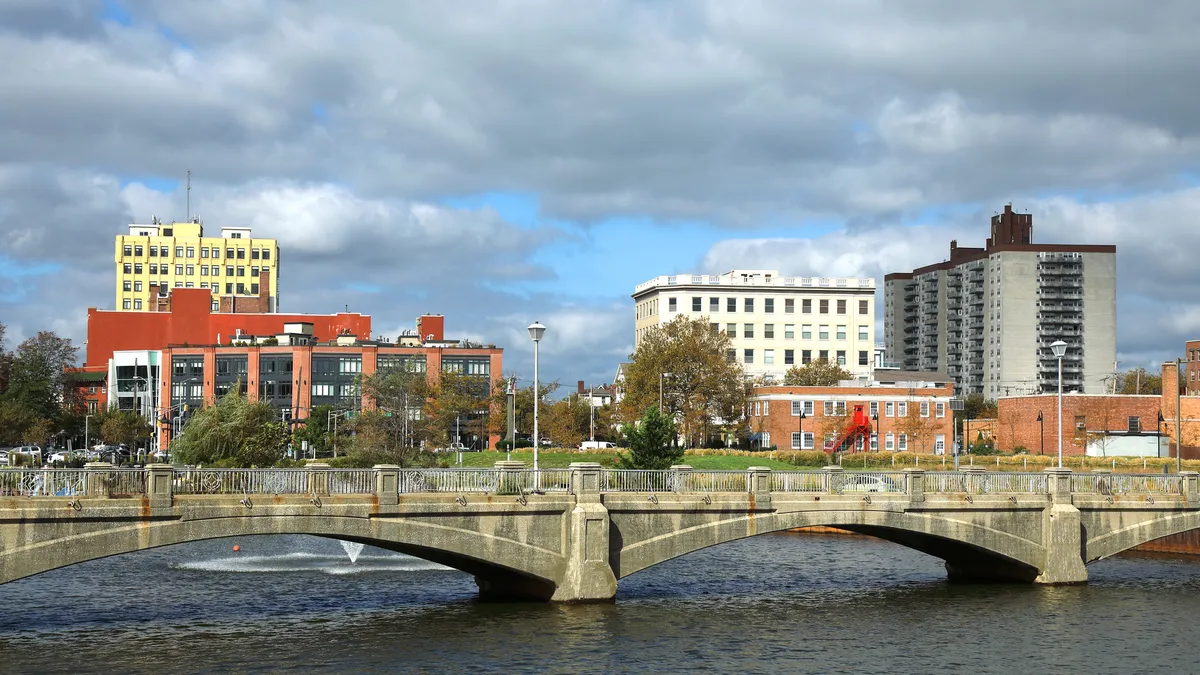Bike lane installation can range from $5,000 per mile for road striping alone to millions for extensive road reconstruction, landscaping, and barricades. How can a city judge whether a proposed bike lane will meet the needs of all transportation users? Start with a temporary one and evaluate it before building the real thing. Rutgers University researchers worked with Asbury Park, New Jersey, to do just that using a combination of high-tech and low-tech strategies.
The effort was part of a micromobility project the seaside city is working on with Rutgers to increase bike and scooter use in its transportation mix and develop a citywide bike network. The installation covered a two-block stretch that leads to the road that parallels the city’s boardwalk.
Using traffic cones, stencils, and spray chalk — as well as a pool noodle to maintain the proper distance from the curb — the researchers set up the trial bike lanes in April. They recorded the bike and e-scooter user experience before and after the bike lane installation with eye-tracking glasses and galvanic skin response sensors that record stress levels. The footage and lidar scans allowed them to simulate the on-site micromobility rider experience via a virtual reality headset in a campus VR lab. Traffic camera footage provided further information on interactions among bikes, scooters, cars, buses, and pedestrians.

The pop-up bike lanes operated for several weeks in April, and the researchers surveyed community residents on their experience using them.
Defining the bike lane — in particular, the use of traffic cones to create tighter turn radiuses at intersections — succeeded in encouraging slower speeds and safer driving, the researchers reported, but the cones blew over in heavy winds, thus they recommended permanent delineators at those intersections. The bike lanes proved popular with surveyed residents as well, with about 90% of the respondents supporting making them permanent.
Polli Schildge of the Asbury Park Complete Streets Coalition said that while the lane was “positively received, it was a little vague. People didn't get it. When they were directed to it, they felt more comfortable there.”
The research team concluded that virtual simulation “has major limitations” in such research. “Riding a scooter is difficult to simulate virtually,” it said, and some users experienced nausea akin to motion sickness when using the VR headsets. “However, the 3D digital environment is very beneficial for modeling potential changes in the built environment,” the report stated.
In addition to making recommendations for permanent changes to the roads and intersections studied, the researchers shared lessons learned from their project:
- Find a control site that does not have a bike lane to compare changes in traffic and speed.
- Evaluate a project for an entire year to see seasonal variations in traffic patterns.
- In addition to monitoring usage, researchers should survey users for their experiences. The Rutgers researchers admit they erred by only surveying bike or scooter users and not motorists.
- Publicize the project on social media and look for other ways to reach affected road users.
The researchers noted they failed to notify bus drivers about how to adjust operations where the bike lane passed in front of a bus stop. While the design allowed the bus to enter the bike lane to pick up and drop off passengers at the curb in front of the stop, some drivers did not pull over. Rutgers project chief Leigh Ann Von Hagen said “That's something that definitely needs to be worked on.”
Rutgers is evaluating the project before the city decides whether to construct a permanent bike lane in that location. The temporary lane wasn't continued over the summer. “That was a little disappointing,” said Rutgers postdoctoral research associate Hannah Younes. Asbury Park “didn't want to do construction work during the summer because it [involves] a busy intersection.”











